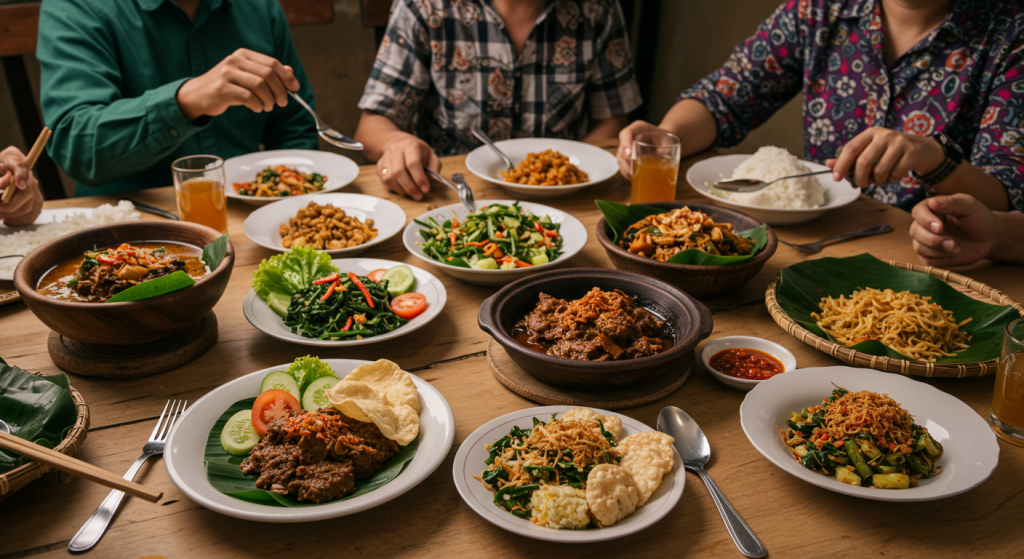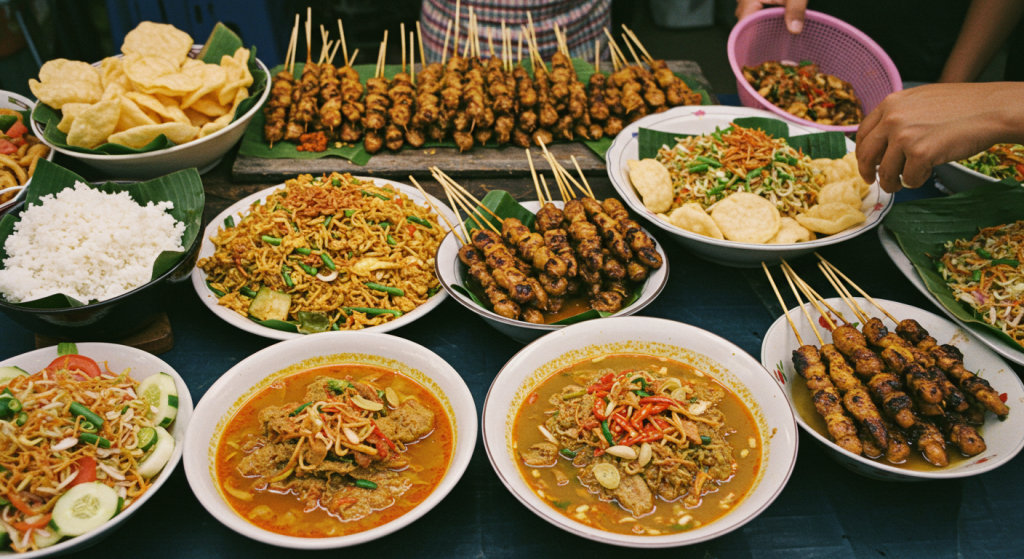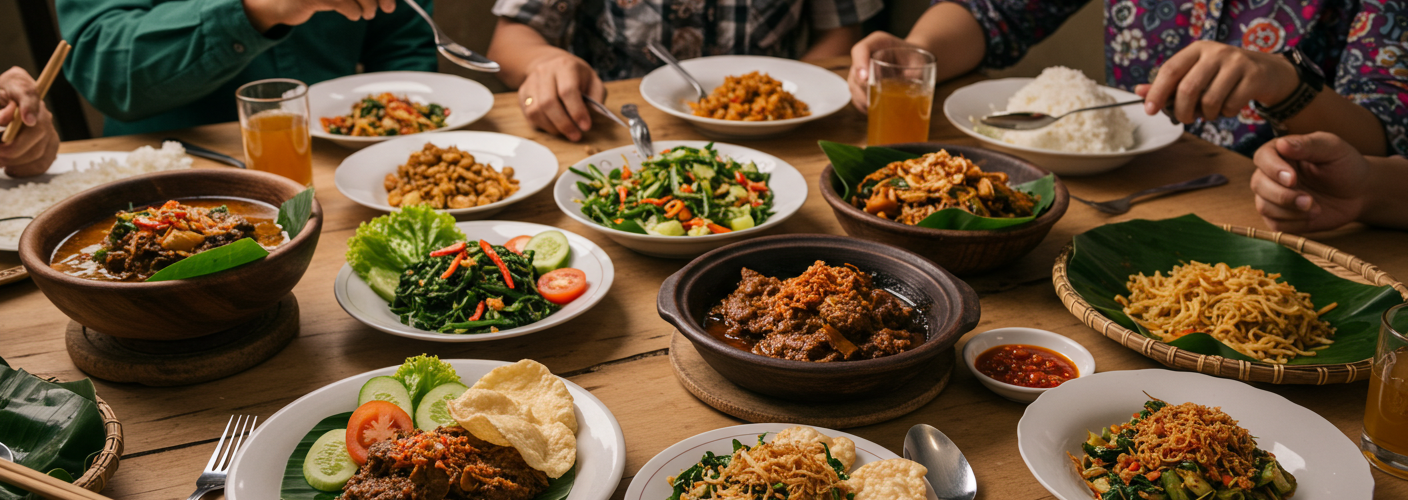

Indonesia, an archipelago of over 17,000 islands, boasts a culinary landscape as diverse as its culture. With more than 300 ethnic groups and a multitude of traditional recipes passed down through generations, Indonesian food is a vibrant fusion of flavors, aromas, and textures that tantalizes the palate and tells the story of its people.
At the heart of Indonesian food is rice, which serves as a staple in nearly every meal. The importance of rice in this culture is underscored by the traditional phrase, “rice is life.” Accompanying rice, you’ll find a medley of dishes ranging from spicy curries to grilled meats, reflecting regional ingredients and cooking methods unique to each area.
In the western part of the country, particularly in Sumatra, you’ll discover Padang cuisine, renowned for its rich flavors and generous use of spices. One of the most iconic dishes is Rendang, a slow-cooked beef dish flavored with coconut milk, lemongrass, galangal, turmeric, ginger, and chili. Its depth of flavor has captivated food lovers both locally and globally, earning it a place among the best dishes in the world. This dish is typically served at festivity gatherings and showcases the culinary heritage of the Minangkabau people.
Traveling east, the island of Java presents a different culinary experience. Javanese food tends to be sweeter, influenced by the abundant use of palm sugar and soy sauce. Dishes like Nasi Goreng, a stir-fried rice dish, and Soto, a savory soup made with meat and vegetables, are staples of Java. Nasi Goreng is often topped with a fried egg and served with a variety of accompaniments like fried chicken and prawn crackers, making it a beloved comfort food throughout the nation.
The eastern regions, particularly Bali and Papua, introduce a unique combination of local ingredients and traditional cooking techniques. Balinese cuisine is characterized by its vibrant use of spices and herbs, with dishes such as Babi Guling (suckling pig) and Bebek Betutu (slow-cooked duck) showcasing the island’s culinary traditions. These dishes are often part of ceremonial offerings, highlighting how food is intertwined with the spiritual practices of the Balinese people.
Seafood also plays a prominent role in Indonesian cuisine, given the country’s extensive coastlines. Grilled fish, often marinated with a concoction of spices and served with sambal (a spicy chili paste), is particularly popular on many islands. The fresh catch of the day is a testament to the country’s bountiful marine resources, making seafood a staple in coastal communities.
Beyond these regional specialties, street food is an essential aspect of eating in Indonesia. Vendors serve up an array of snacks and meals, from Satay (grilled skewered meat) to Martabak (stuffed pancakes) and Kerak Telor (spicy rice cake). These dishes are not just food; they are experiences, representing the blend of flavors and the warmth of Indonesian hospitality.
In conclusion, Indonesia’s food scene represents a rich tapestry of cultural influences, regional diversity, and culinary innovation. Whether enjoyed at an upscale restaurant or from a street vendor, every bite is a journey through history, geography, and tradition. For anyone looking to explore Southeast Asian cuisine, Indonesian food offers a delectable gateway into a world of flavors waiting to be discovered.




Add comment